Schafer was regarded quickly as one of the greatest defensive minds in college hockey. His teams were noted for producing the best goals-against averages and save percentages of any teams in the nation as well as producing special teams that would deconstruct and control opponents from all tiers of hockey. He achieves all of these feats with the high academic standards of Cornell University and the shortened schedule of an Ivy-League program.
Friday's victory over the Tigers of Princeton was Coach Schafer's 350th win. The 350-win plateau has become a de facto plane that distinguishes elite coaches from their peers. Little fanfare accompanied the game, but it was a major achievement. Mike Schafer is the winningest coach in Cornell hockey history. He has brought more Whitelaw Cups to East Hill than had any of his predecessors. He has earned more berths to national tournaments than any other coach in the history of Cornell hockey. Nearly half, 47%, of all bids that Cornell has earned to the NCAA Tournament have been earned by Schafer-coached squads.
Mike Schafer reached the 350-win plateau faster than most of his peers who have done the same. He did so with the abbreviated schedule of the Ivy League. It has taken Mike Schafer 18 seasons and three games to reach the 350-win mark. Predictably, this correlates to Schafer's owning of a winning percentage of 0.623 over his career at Cornell. Schafer's winning percentage is the seventh-best of all active coaches. Red Berenson of Michigan and Dick Umile of New Hampshire are the only active coaches with better winning percentages who have earned more than 350 wins at the same institution.
The 2013-14 season marks Mike Schafer's 19th season behind the Cornell bench. It took Schafer just 615 games to gain a status that only 51 other coaches have in the history of college hockey at the Division I level. Little commemoration surrounded Schafer's attainment of a milestone. His historic 350th win deserves recognition, so WAFT decided to highlight 19 games that capture the essence of Schafer's time on East Hill to date.
The 19 games chosen are by no means exhaustive. Not all are wins and not all claimed championships. The greatest part of college hockey is that it is captured in shared, subjective experiences, so if you think that we missed one or would like to tell the story of another, please comment. Here is WAFT's list of 19 games that shade the contours of what it is like to have been a Cornell player or member of the Lynah Faithful during the first 19 seasons of the Schafer Era.
| 19. December 3, 2011 | Clarkson at Cornell, 0-0 T, Lynah Rink The legacy of great coaches often extends behind the games that they coached or won. Their influence includes the way that their proteges or assistants shaped the game. Casey Jones was such an assistant. Jones graduated from Cornell in 1990. He became known as one of the best recruiters in college hockey when one of his recruiting classes propelled Ohio State to the Frozen Four. Mike Schafer lured Jones back to East Hill with the promise that Schafer would help and encourage him to find a head coaching job in ECAC Hockey. Jones now helms the Golden Knights of Clarkson and gives added emotion to clashes between Clarkson and Cornell. The first meeting of the two was historic as many wondered if the apprentice would become the master. Jones appears to have turned Clarkson around, but has yet to record a victory at Lynah Rink. |
| 18. October 26, 2006 | Robert Morris at Cornell, 4-1 W, Lynah Rink ECAC Hockey programs lament that some major programs in Hockey East and the former WCHA refuse to be good college-hockey Samaritans. Cornell proved that helping programs find games was not just an impotent talking point under Mike Schafer. The newest program in college hockey was Robert Morris in 2004. It took just two seasons before Cornell invited the Colonials to East Hill to play the neophyte program. The founding and current head coach of the newest program in college hockey at the Division I level is former Cornell assistant Derek Schooley. Schooley followed Schafer from Western Michigan to East Hill. Schafer coached Schooley as a defenseman for the Broncos from his freshman season until Schooley graduated. In 1997, Schooley would follow his onetime defensive coach to Ithaca, NY. Schooley still reflects fondly upon his brief time at Cornell. Schooley has built his program from the ground up. The Colonials have registered key upsets already in their program history including defeating Miami last season in the Three Rivers Classic. Additionally, Schooley helped spearhead Pittsburgh's hosting of the Frozen Four last season. All things considered, it indicates how Schafer's influence affects an emerging program in Robert Morris and reached the highest level of the sport last April. Schafer may have been victorious in the first meeting, but it would be great to see Cornell return the trip to 84 Lumber Arena in Pittsburgh, PA. |
| 17. November 24, 2012 | Michigan at Cornell, 5-1 W, Madison Square Garden In the early 2000s, it seemed that the scale of the NHL proved alluring for Mike Schafer. However, that was all before the rise of Red Hot Hockey. Over a six year period, Boston University and Cornell sold out Madison Square Garden three times in odd years. The installments of Red Hot Hockey were absolute sell-outs. The notion of Cornell hosting a game alone began to become popular. Some doubted if it was financially feasible. Then, before the 2012-13 season, it was announced that Cornell would host the inaugural Frozen Apple on even years when Red Hot Hockey is hosted on odd years. Cornell dominated Michigan in a rematch of the 2012 NCAA Midwest Regional Semifinal with a 5-1 victory, but what was equally poignant was that Cornell could do what few other programs in college hockey can. The Big Red sold out Madison Square Garden for the fourth time in seven years in an environment nearly as electric as that of Red Hot Hockey. Cornell proved that it was unique and its clout among the greatest in the game. What at one time seemed like an incentive for Schafer to consider the NHL, now seems like a forgotten afterthought when the most technologically advanced arena in the NHL roars to life with the passions of the sport's greatest fans. |
| 16. March 13, 2009 | 2009 ECAC Hockey Quarterfinal Game 1, 0-1 L, Lynah Rink Just ask anyone, particularly RPI fans, if Mike Schafer has a problem speaking his mind. The answer will be a resounding "no." The moment that captures these sentiments best is the 2009 ECAC Hockey Tournament Quarterfinal Series at Lynah Rink. RPI was the opponent. The Engineers managed to rest a 1-0 victory from Cornell at home. Schafer was displeased with the fact that only seven penalties were called during an apparently chippy contest. Schafer remarked to the media after the loss: “Our league has got to wake the hell up. Period. Let’s give RPI full credit. In that game, they beat us tonight. They did what they had to do to win. It’s no disrespect to Seth and his program. Hell of a job by them coming in here. They did what they had to do to win. But when is our league going to wake up with our officiating? There’s obviously a directive. Anybody that watches our hockey throughout the whole course of the year that sees the way that the game was called throughout the whole course of the year, sees a game that’s totally different in playoffs. The holding, the tripping, the mugging, the tackling. This isn’t hockey. What are we doing as an ECAC league? Where’s the direction to call the game the way it’s supposed to be called? And obviously I’m putting myself at risk here tonight, but I’m a veteran coach in this league. I’ve been around enough to see that this can’t continue. Call the play. Call the penalty." Schafer was in fact putting himself at risk. He was suspended for the second game of the series. His team forced a game three and its head coach was behind the bench as Cornell won the rubber game. The Lynah Faithful were sure that Schafer's words reinvigorated his team and woke up lax officiating, while RPI fans were certain that Cornell controlled the officials of ECAC Hockey. |
| 15. March 24, 2012 | 2012 NCAA Regional Final, 1-2 L, Resch Center The choice of this game could be as readily interchanged with the 2009 NCAA Regional Final. The results of both contests left an impression on Cornell hockey fandom, the institution of Cornell hockey, and the coach who leads both. Mike Schafer has one of the best records of all coaches in college hockey of winning regional semifinals. It is in the deciding game that sends a team to the Frozen Four that Schafer-coached Cornell teams have suffered in two of their last three appearances in the national tournament. In 2009, Cornell rallied to defeat Northeastern late in the semifinal contest to advance to fight for a chance to go to the Frozen Four to implode against Bemidji State. In 2012, Cornell defeated national-title hopeful and favorite Michigan in commanding fashion for an inopportune broken stick to snap Cornell's chance to compete for a national championship in Tampa Bay, FL. The monkey is thoroughly on Mike Schafer's back. He knows it. After a hard-fought, but close, loss to eventual national runner-up Ferris State, Schafer remarked in the press conference: "It's a disappointment when you have so much invested. Congratulations to Ferris moving on to the Frozen Four. I've been in this situation a lot as a head coach and we've faced a lot of disappointment in this regional to get to the Frozen Four. Then, back in 2003, we thought we'd get back there quicker and we haven't...To not achieve that goal of getting to the Frozen Four is a huge disappointment." |
| 14. March 23, 2002 | 2002 NCAA Regional Semifinal, 6-2 W, Centrum Centre Some games are less about the outcome than how they occurred. The 2002 NCAA Regional Semifinal against Quinnipiac is such a game. The opponent did not matter. The dominating result did not matter much. What the 2002 regional semifinal symbolized was the first time in over a decade that Cornell had earned a berth to the Frozen Four with an at-large bid rather than the Whitelaw Cup. It was the first such at-large bid under Mike Schafer and it was the fourth at-large bid that Cornell had earned to the NCAA Tournament in program history. Mike Schafer has earned three such bids since then. |
| 13. March 27, 2005 | 2005 NCAA Regional Final, 1-2 L, Mariucci Arena Cornell is a program that recognizes few moral victories. A championship or banner, or nothing seems to be the mentality. Mike Schafer has cultivated that culture to great effect and has brought five tournament championships back to Ithaca with that mindset. However, in 2005, Cornell showed how elite it was when it faced the Golden Gophers of Minnesota in the regional final of the NCAA Tournament. The game between the historic powers would be played on Minnesota's home ice at Mariucci Arena. Cornell would be forced to play with much less rest as their regional semifinal was played later in the evening than that of Minnesota. Schafer's lone reservation about playing a high-stakes game against the Gophers in their own building? The amount of rest Cornell would have. This singular reservation proved uncannily accurate and prophetic. The two best teams in the nation in the 2002-03 season were Cornell and Minnesota. They practiced nearly diametrically opposite systems with Cornell's defensive regime and Minnesota's more open European-influenced system. In 2003, they were destined to meet in the national title game, until a series of events took place that led to Cornell falling to New Hampshire in the national semifinal. The 2005 NCAA Regional Final would serve as a fill-in for a game that seem preordained that never happened. Cornell struck first as Mitch Carefoot gave the Big Red the lead. The Gophers responded less than two minutes later. However, it was Cornell that would dictate the pace of the game in regulation. It seemed that Minnesota's greatest nightmare of being controlled by a defense-first team from the East had come to fruition. The game went to overtime stalled at 1-1. It took nearly five minutes for Minnesota to score on the less rested Cornell. But, Mike Schafer and his 2004-05 team proved that even with the most disadvantageous situations Cornell was again able to compete with the best teams in the nation. |
| 12. December 28, 1998 | 1998 Badger Showdown, 3-2 W, Bradley Center Some momentous events pass unnoticed. Others experience fanfare upon their arrival. Cornell's victory over Wisconsin in the 1998 Badger Showdown is of the former kind. Or, at least, upon reflection it seems a historic marker largely forgotten. ECAC Hockey had not regained the current level of pride that it enjoys today. Western programs, those of the CCHA and WCHA, were viewed as superior to those from either conference of the East. It fell to the major programs of the East, including Cornell, to uncover the falsity of these beliefs. It took Mike Schafer just three seasons before he showed the skaters on East Hill that their style of hockey could defeat even the most fearsome opponents from the West. Behind two goals from Ryan Moynihan, the Big Red toppled the Badgers of Wisconsin for Mike Schafer's first victory against a historic Western team. It was Cornell's first win against a team from the historic West since 1991 when Cornell took one game out of Michigan in the 1991 NCAA Tournament. It was Cornell's first win against a WCHA team since the 1986 NCAA Tournament when Schafer, as a senior captain, led Cornell to a victory over the Denver Pioneers. |
| 11. March 22, 1997 | 1997 NCAA Regional Semifinal, 4-2 W, Van Andel Arena Cornell's first season under Mike Schafer was spectacular. The Big Red won a tournament championship for the first time in a decade and returned to the national tournament for the first time in five years. That is where Schafer's first season would end. Cornell lost to Lake Superior State in the first game of the 1996 NCAA Tournament. After doing the unthinkable and repeating as ECAC Hockey Champions in 1997, it was apparent what Cornell needed to do; it needed to make a run in the national tournament. The emerging RedHawks of Miami were Schafer's first victim in the national tournament. Two third-period goals for Cornell lifted Cornell to a 4-2 victory and Cornell's first victory in the NCAA Tournament in six years. Cornell advanced. It was the first time that Cornell advanced in the national tournament in 25 years. Since Mike Schafer has been behind the bench at Cornell, the Big Red has advanced in all but two of the nine national tournaments to which it has been invited. |
| 10. March 10, 2007 | 2007 ECAC Hockey Quarterfinal Game 3, 2-3 L, Lynah Rink Losses if used properly provide wake-up calls. A somewhat lethargic and entitled Cornell squad hosted Quinnipiac in the 2007 ECAC Hockey Quarterfinals at Lynah Rink. The Bobcats swept Cornell, outscoring them two to one over the series at home. It ended Cornell's season. Mike Schafer has used the embarrassment of getting swept at Lynah Rink and not advancing to the ECAC Hockey Championship Weekend to motivate all subsequent teams. Cornell has not lost a playoff series at Lynah Rink since it dropped that post-season series to the youngest member of ECAC Hockey. |
| 9. March 16, 1996 | 1996 ECAC Hockey Final, 2-1 W, Herb Brooks Arena This list could have become easily a list of championship games, but the games that clinch titles are not always the most important in institutional memory. However, the importance of Mike Schafer's bringing a championship and pride back to Lynah Rink in March 1996 cannot be overstated. It was indubitably an inflection point in the history of Cornell hockey. Cornell had not won a championship since Schafer was a captain at Cornell a decade before. To reignite passion and zeal, Schafer, a former standout who even the youngest members of the Faithful can tell you broke a stick over his head before The Game against Harvard on December 10, 1983, emphasized the Cornell-Harvard rivalry. The Lynah Faithful were reinvigorated as Cornell swept the regular season against their archrival. Wins of 5-3 and 5-4 were just the beginning that season. The crescendo came when Harvard was the last team standing between Cornell and an ECAC Hockey Championship. Schafer impelled his team to one more victory over its most hated opponent. The resulting 2-1 win restored confidence in Cornell hockey in a way that only winning can. It came with the cathartic cascade of dominating the reviled Crimson. |
| 8. March 12, 2005 | 2005 ECAC Hockey Quarterfinal, 3-2 W, Lynah Rink Mike Schafer has lost playoff series at Lynah Rink only twice in his nearly two decades as bench boss. The most recent was in 2007. The first was in 2004. In 2004, Cornell defeated the Golden Knights 5-1 in the series-opening contest. Then, Clarkson outscored Cornell two to one over the next two games in the series. Serendipitously, seeding and results fell in such a manner for the 2005 ECAC Tournament that Cornell would host Clarkson for the second consecutive year with a chance at redemption. Cornell outscored Clarkson four to one over the playoff series. The Big Red swept the Golden Knights. The series was not without its need for heroics. The deciding game two would require overtime, but Topher Scott found the magic to send Cornell to the Times Union Center where Cornell would win its second Whitelaw Cup in three years. The ability for Cornell to come off of a hangover year in the 2003-04 season, after making the Frozen Four in 2003, to win a Whitelaw Cup showed that rebuilding years were not a sufficient excuse under Schafer's tenure. |
| 7. December 1, 2002 | Boston University at Cornell, 5-1 W, Lynah Rink Consider the series between Boston University and Cornell during the 2001-02 and 2002-03 seasons the foil to Cornell's win over Wisconsin in December 1998. Where the latter is rarely acknowledged, the two-year home-and-home between the Terriers and Big Red is very much alive in the institutional memory of Cornell hockey, especially in the mind of Mike Schafer. Schafer points to that two-year series as the turning point for Cornell hockey in the modern era. The series saw legendary coach Jack Parker famously refer to the 2002-03 match-up as "men against boys." Cornell earned a split at Walter Brown Arena in the 2001-02 season and swept Boston University at Lynah Rink in the following season. Cornell won three of the four contests with a 16-to-nine goal differential in its favor. More importantly, it proved to Cornell that again it had the dominance and skill to compete with the best teams in college hockey at any time and in any place. Mike Schafer described this feeling in his own words: "We walked in and we got a split on Boston University on the road. They were number two in the country. We were number eight. We walked into their home ice surface and we split with them. We came back the following year. We beat them here badly; two games in a row. Our team knew at that point in time, it’s been there ever since, that we could beat anybody at any time or any place." The series re-established Cornell as a nationally elite program. |
| 6. January 12, 1996 | Cornell at Army, 1-4 L, Tate Rink In defeat, the true character of teams, programs, and coaches emerge. The turning point of Mike Schafer's first season was not a victory. It was a defeat at the hands of an unlikely opponent. Tate Rink hosted Cornell in January 1996. Cornell had managed a respectable 7-5-3 record before it faced off against the Black Knights of West Point. Cornell dropped a 1-4 decision to Army. It was Cornell's first loss to Army in nearly seven years. Mike Schafer believed that the importance of winning as an essential element of the legacy of Cornell hockey was not getting through to his team. Schafer, in a characteristic stern fashion, did not allow his freshman team to remove its equipment. He made them run the stands at Tate Rink. The team was still running the stands when West Point's cadets departed the building for the evening. Then, after his first team began to understand how important winning and a winning effort was to Schafer-led teams, they departed from the Hudson Valley for Ithaca, NY still in its equipment. The team earned 14-3-1 record over its last 18 games. The post-game practice sent a message that has been with all Schafer-coached teams since then; winning is expected and anything less is a punishable offense to Cornell's hard-working coach and hockey history. |
| 5. March 22, 2003 | 2003 ECAC Hockey Final, 3-2 W, Times Union Center The next two points on this list easily could be interchanged. Both are important for different reasons. The 2002-03 season was easily one of the best in the history of Cornell hockey. Some would argue that it was the best. It is the nearest competitor to dethrone the 1969-70 season as the most successful in Cornell hockey history. Cornell lost only four regular-season games that season. However, what motivated the team was a playoff loss to Harvard in March 2002. The Crimson bested Cornell in the 2002 ECAC Hockey Championship Final in overtime. The loss was second consecutive title game in which Cornell was denied its tenth Whitelaw Cup. The Class of 2003 was determined to exact revenge against Harvard. Fate smiled on that 2002-03 team as Harvard was the last team standing for the second time in two years. Cornell's revenge would be exacted on the same stage. Sam Paolini scored the game-opening and game-winning goal of the contest. Schafer and his team were ecstatic. A year's worth of work had come nearly full circle. The catharsis was profound. Another goal of Schafer's eighth team was to win a national championship. Cornell stormed to a berth in the Frozen Four with an overtime win over Boston College. Cornell would fall short of winning a national title, but it would end the season as the highest ranked team in the nation. That Cornell team won 30 games to surpass the 29-win total of the 1969-70 team. It remains the winningest team in the history of Cornell hockey. The emotional high point of the season and the most memorable was the moment a season's worth of investment found release as Sam Paolini downed Cornell's archrival to give Mike Schafer his third Whitelaw Cup en route to becoming the coach with the winningest season in Cornell hockey history. |
| 4. March 20, 2010 | 2010 ECAC Hockey Final, 3-0 W, Times Union Center Records cannot be viewed in a vacuum. The 2003 and 2010 Whitelaw Cups of Cornell hockey are those vested with the most emotion in Cornell's recent championship seasons. How can a team or a season with a 21-9-4 record possibly rival one with an all but untouchable 30-5-1 mark? The simple answer is the quality of opponents that each defeated, the means by which playoff glory was claimed, and debates surrounding each season. A five-year hiatus separated Cornell's 11th and 12th Whitelaw Cups. People had begun to doubt Cornell's, and by extension Schafer's, ability to remain dominant in the changing landscape of college hockey. The game had evolved and changed since the late 1990s and early 2000s. Schafer knew that he had something special in store for the 2009-10 season. Where the 2002-03 team notched out-of-conference wins against Ohio State, Boston University, and Western Michigan, the 2009-10 team wrested victory from Niagara, New Hampshire, and North Dakota with a tie against Boston University. The elite of college hockey tested the 2009-10 team more during the regular season than it had in any other season. Sheer dominance was what Schafer had on tap for the 2010 ECAC Tournament. Cornell silenced all detractors with allowing one goal against and never trailing as it dominated the ECAC Hockey postseason like no team had in the nearly 50 years of the Conference. Symbolic of the new era, Schafer's fifth championship team needed to defeat a stout Union team that made its first appearance in the ECAC Hockey Championship Weekend. Cornell downed the Dutchmen with its third consecutive 3-0 outing. Schafer proved naysayers wrong with a team that outscored opponents 14 goals to one goal allowed, protected a 0.25 goals-against average, and registered a 0.990 save percentage. Schafer tied Joe Marsh as all-time leader in terms of ECAC Championships won and did so in one fewer season. Schafer secured his place in Cornell hockey history by becoming the first Cornell coach to win five Whitelaw Cups. |
| 3. March 23, 2012 | 2012 NCAA Regional Semifinal, 3-2 W, Resch Center It is a cliche that one must beat the best to be the best. In the recent memory of Cornell hockey, the real question is there solace in beating the favorite if you do not go on to finish the task at hand. Cornell was placed in the proverbial bracket of death in the 2012 NCAA Tournament. The three other teams that filled the Midwest Regional bracket were Denver, Ferris State, and Michigan. Schafer managed to rally his team after a 6-1 loss at the hands of Harvard in the 2012 ECAC Hockey Championship Semifinals to play into the national tournament with a 3-0 win over Colgate in the consolation game. Cornell entered as a fourth seed. Michigan was the first seed in the regional. Boston College and Michigan were viewed as the two teams that were destined to win a national championship in 2012. The Wolverines were less than 12 months removed from falling in overtime to Minnesota-Duluth in the 2011 national title game. It was national title or bust for the Wolverines. Schafer and his current staff of assistants were more than up to the task of preparing their team to battle with and defeat one of the nation's best teams. After a rough start that gave Michigan a 1-0 lead, Schafer used his timeout. He calmed the team and helped right the ship. Despite what Michigan media and assistants may have said before the game, the winged decals on Michigan's helmets did not strike fear in the hearts of Cornell players who were led by a coach who reinvested pride in his alma mater. Cornell responded. The Big Red took the lead. Then, opportunistically, Cornell scored in overtime to eliminate Michigan. Cornell proved again that it remained the best in college hockey. The Big Red dominated the assumed national champion behind the preparation and in-game leadership of Mike Schafer. |
| 2. March 26, 2006 | 2006 NCAA Regional Final, 0-1 L, Resch Center Brackets can be deceiving. The furthest that Cornell went in the NCAA Tournament under Mike Schafer has been the national semifinals. It reached that height in 2003. However, a regional final captures likely the high-water mark of teams under Schafer. The New Hampshire team that downed Cornell in the 2003 Frozen Four went on to be decimated 5-1 by Minnesota in the national title game. There are few better examples when fans and teams at a preliminary round contest knew that its result would decide the eventual national champion than the 2006 NCAA West Regional Final. Wisconsin defeated Cornell. The Badgers went on to dominate the Frozen Four field by outscoring their opponents more than two to one. The triple overtime game that decided whether Cornell or Wisconsin would advance from the 2006 West Regional left an indelible mark on two historic rivals of the national tournament. Cornell and Wisconsin met in the 1970 and 1973 NCAA Tournaments. All three contests have left impressions on both programs. However, it was the most recent that stings Cornell the most as the Big Red was denied its third national championship as the Badgers advanced to claim their sixth. It would have been Mike Schafer's first national championship and Cornell's first in 36 years. Wisconsin advanced to its first Frozen Four in 14 years and Mike Eaves won his first national championship. The contest between Cornell and Wisconsin is the second-longest in NCAA Tournament history. It lasted 111 minutes and 13 seconds. Dave McKee's 59 saves are fourth-most in one contest in NCAA Tournament history. The winner of the contest seemed preordained to win the national title a few weeks later. Members of the Lynah Faithful who found themselves onlooking found it all too easy to imagine another team clad in red and white celebrating their coach's first national title at the Bradley Center in Milwaukee, WI. |
| 1. Date Unknown | Year Unknown National Title Game, Location Unknown How can you top an all but guaranteed national title run in 2006? The answer is obvious: the real thing. Considering this list commemorates the contributions of Mike Schafer to Cornell hockey on his way to earning 350 victories for the Big Red in the midsts of his 19th season, it seems appropriate to take a page out of his own cache of responses. Schafer is adept in his verbal gymnastics to avoid giving answers that he does not want to give. He nonetheless is consistent in one response throughout all of his career, from his first win to his most recent. When asked what is the biggest win of his career, consistently he responds: "Still looking for it." Bringing a national championship back to East Hill has been Schafer's self-appointed task since the early 2000s. He has been very sincere about that. His reliable answer to the above query indicates that he views his career, much like his teams mid-season, as a work in progress. One cannot determine the greatest moment of his career if he does not see it himself. If Schafer and Cornell can get beyond any psychological impasses that may have prevented their ultimate success in previous season's runs, it is hard to imagine that Schafer and his teams can be denied indefinitely winning Cornell's third NCAA national title. The question after that moment will be if he has found his greatest moment or biggest win, or if he will go for another. |

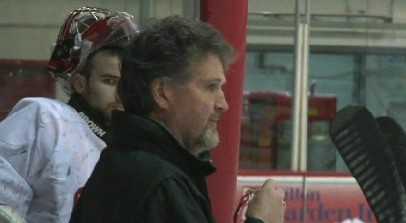
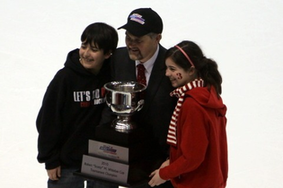

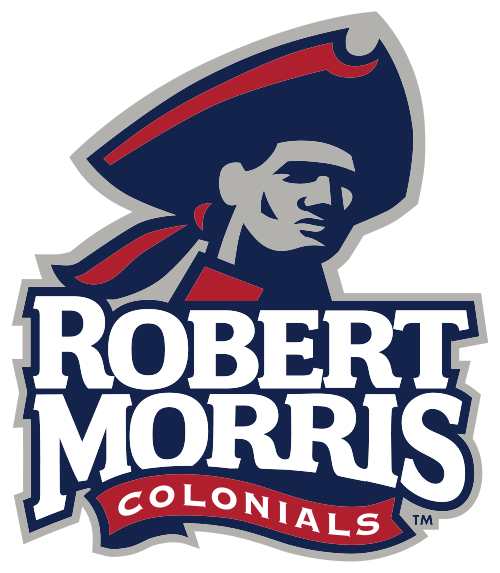
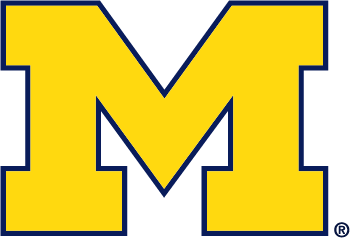

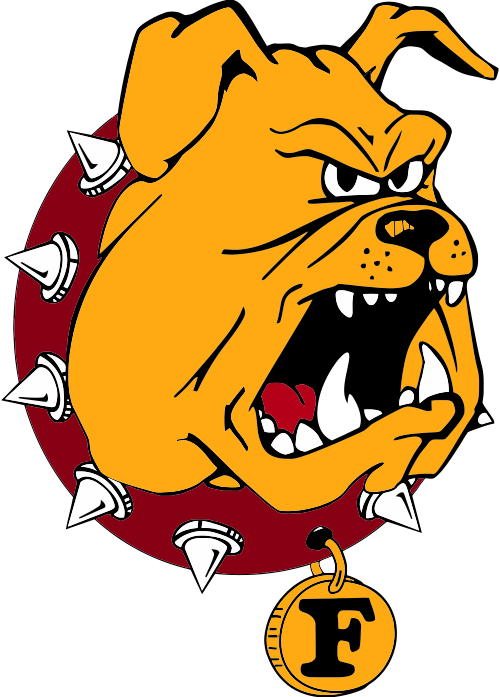

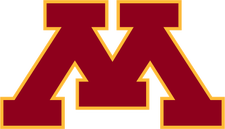
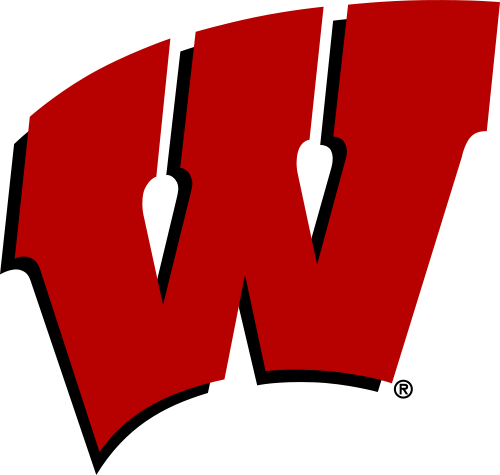
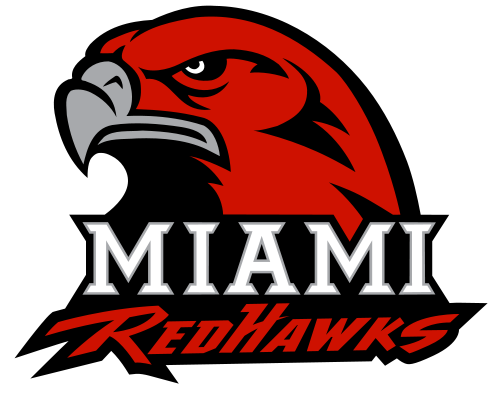







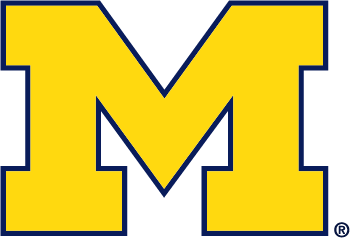
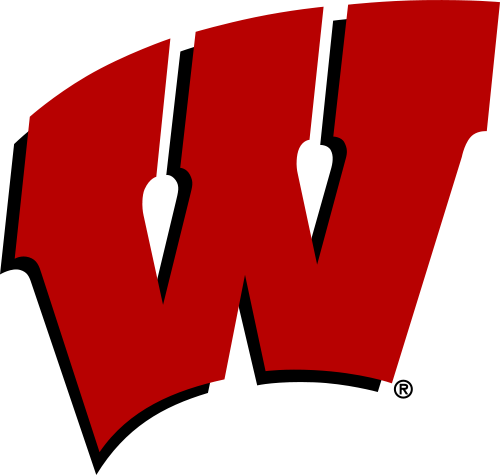

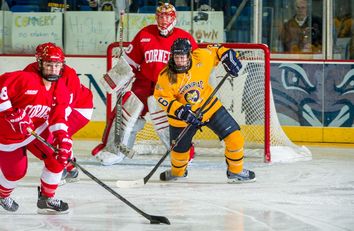
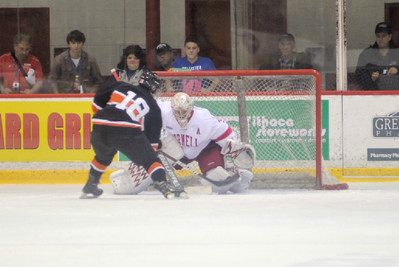


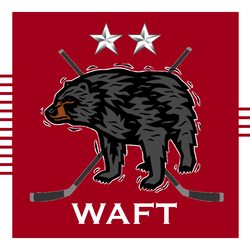

 RSS Feed
RSS Feed
